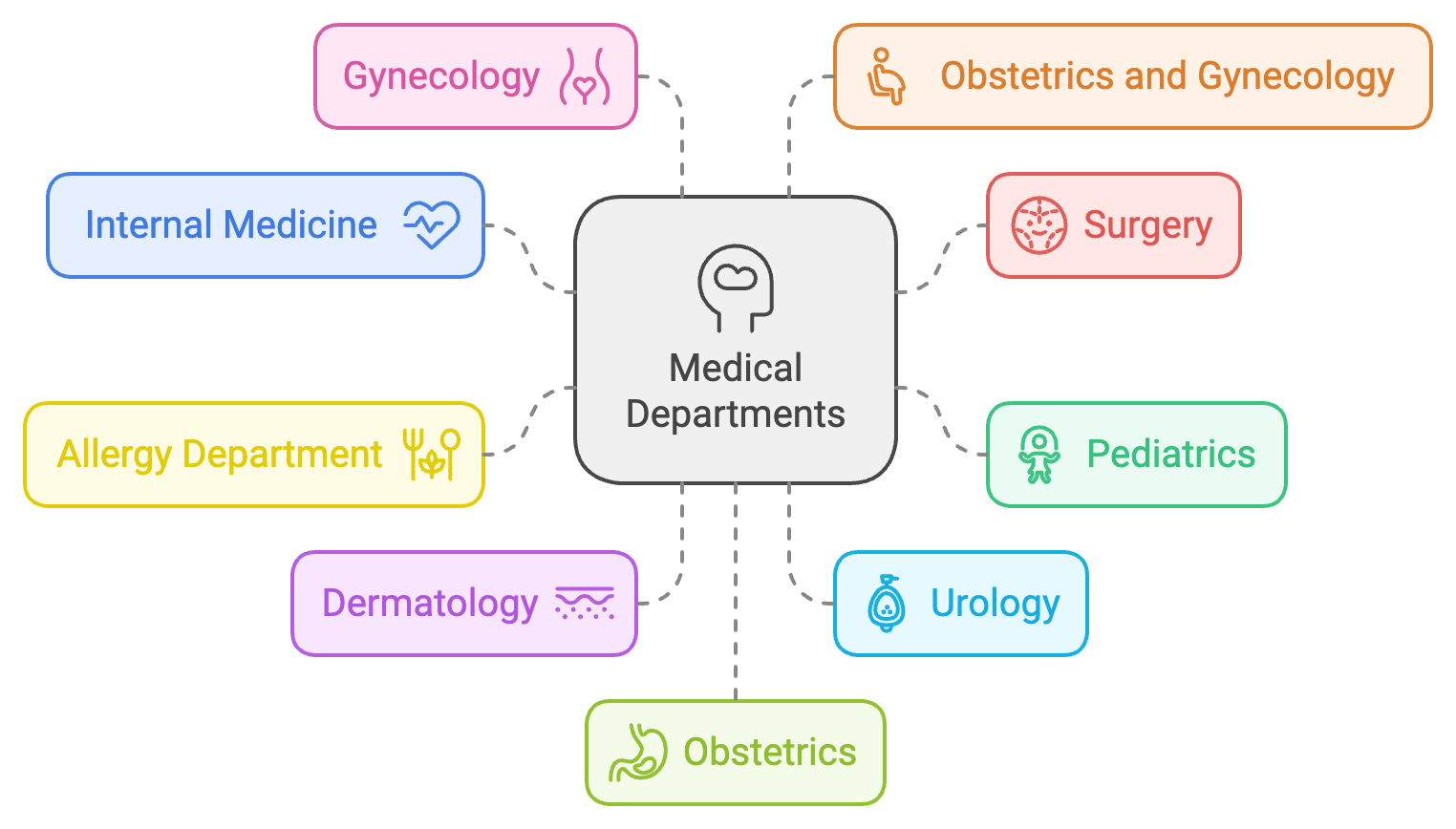呼吸器内科における間質性肺炎に関する会話例と英語フレーズ
呼吸器内科では、**間質性肺炎(Interstitial Pneumonia)**が診察されることがあります。この病気は肺の間質(肺の構造を支える組織)が炎症を起こし、肺が硬くなることで、呼吸がしにくくなり、長期にわたる呼吸困難や乾いた咳、疲労感を引き起こします。適切な診断と治療は進行を遅らせ、患者の生活の質を向上させるために重要です。
この記事では、間質性肺炎に関連する患者との診察を想定し、特有の会話例と重要なフレーズを学びます。
患者の設定
- 名前: Yoko Tanaka (55歳、女性)
- 職業: 教師
- 主な症状: 数ヶ月にわたる乾いた咳と呼吸困難、特に階段を上ったり運動をした後に悪化する。
- 既往歴: 健康だったが、数ヶ月前から咳と息苦しさを感じるようになった。
- 生活習慣: 非喫煙者で、家族歴に肺の病気はない。
診察の流れと会話例
1. 初診での問診と症状の確認
Doctor: “Good afternoon, Mrs. Tanaka. I understand you’ve been experiencing a dry cough and shortness of breath for a few months now. Can you tell me more about when these symptoms started and what seems to make them worse?”
日本語訳: 「こんにちは、田中さん。ここ数ヶ月、乾いた咳と息切れが続いているとお聞きしましたが、症状がいつから始まり、何が悪化の原因になるか教えていただけますか?」
Patient: “It started about six months ago. At first, it wasn’t too bad, but now I feel short of breath even when walking or climbing stairs.”
日本語訳: 「6ヶ月前から始まりました。最初はそれほどひどくなかったのですが、今では歩くときや階段を上るときに息切れを感じます。」
Doctor: “I see. So the shortness of breath gets worse with physical activity. Have you noticed any other symptoms, such as chest pain, fatigue, or fever?”
日本語訳: 「なるほど。身体活動によって息切れが悪化するんですね。他に、胸の痛みや疲労感、発熱などの症状はありますか?」
Patient: “No, I haven’t had any fever or chest pain, but I do feel more tired than usual.”
日本語訳: 「いいえ、熱や胸の痛みはありませんが、普段よりも疲れやすいと感じます。」
2. 間質性肺炎のリスクと可能性についての説明
Doctor: “Based on your symptoms, we need to consider the possibility of interstitial pneumonia. This is a type of lung disease that causes inflammation and scarring of the lung tissue, making it harder for you to breathe. It often develops gradually over time, which matches your description of a worsening dry cough and shortness of breath.”
日本語訳: 「症状から考えると、間質性肺炎の可能性を考慮する必要があります。これは、肺の組織に炎症や瘢痕を引き起こし、呼吸が困難になる病気です。通常、時間をかけて徐々に進行し、乾いた咳や息切れが悪化していくというあなたの説明と一致します。」
Patient: “Is this something serious? Will I need treatment right away?”
日本語訳: 「これは深刻な病気ですか?すぐに治療が必要ですか?」
Doctor: “Interstitial pneumonia can be serious, especially if left untreated, but early detection and treatment can help manage the symptoms and slow the progression. We’ll need to run some tests, including a chest CT scan and pulmonary function tests, to confirm the diagnosis and determine the severity of the disease.”
日本語訳: 「間質性肺炎は、特に治療しない場合は深刻になることがありますが、早期発見と治療で症状を管理し、進行を遅らせることができます。診断を確定し、病気の重症度を判断するために、胸部CTスキャンや肺機能検査などいくつかの検査を行う必要があります。」
3. 検査の説明と診断方法
Doctor: “We’ll start with a chest CT scan, which will give us detailed images of your lungs. This will help us look for signs of scarring or inflammation. We’ll also do pulmonary function tests to measure how well your lungs are working and how much air you can breathe in and out.”
日本語訳: 「まず、胸部CTスキャンで肺の詳細な画像を確認します。これにより、瘢痕や炎症の兆候があるかどうかを調べます。また、肺機能検査を行い、肺の働きや吸入・呼出能力を測定します。」
Patient: “Are these tests painful?”
日本語訳: 「これらの検査は痛いですか?」
Doctor: “No, both the CT scan and pulmonary function tests are non-invasive and shouldn’t cause any pain. The CT scan takes about 10 to 15 minutes, and the pulmonary function tests involve breathing into a machine to measure your lung capacity.”
日本語訳: 「いいえ、CTスキャンと肺機能検査はどちらも非侵襲的で、痛みはありません。CTスキャンは10〜15分ほどで、肺機能検査では、機械に息を吹き込み、肺の容量を測定します。」
4. 診断結果と治療法の説明
Doctor: “If the tests confirm interstitial pneumonia, we’ll discuss treatment options. There’s no cure, but treatment can help slow the progression and manage symptoms. We often use corticosteroids or other medications to reduce inflammation, and in some cases, oxygen therapy may be necessary if your oxygen levels are low.”
日本語訳: 「もし検査で間質性肺炎が確認された場合、治療法について話し合いましょう。この病気に治癒はありませんが、進行を遅らせ、症状を管理することは可能です。通常、コルチコステロイドやその他の薬で炎症を抑える治療を行い、場合によっては酸素療法が必要になることもあります。」
Patient: “Will I need to take medication for the rest of my life?”
日本語訳: 「一生薬を飲み続けなければいけませんか?」
Doctor: “It depends on the severity of your condition. In some cases, long-term medication is necessary to keep the inflammation under control, but we’ll tailor the treatment to your specific needs. We’ll monitor your condition regularly with follow-up visits to adjust the treatment as needed.”
日本語訳: 「病気の重症度によります。場合によっては、長期にわたる薬物治療が必要ですが、あなたの症状に合わせて治療を調整します。定期的なフォローアップ診察で経過を観察し、必要に応じて治療を調整していきます。」
5. 日常生活での管理と予防策
Doctor: “To help manage your symptoms, it’s important to avoid irritants like smoke, dust, and pollution, which can make your condition worse. Regular, gentle exercise like walking can help maintain your lung function, and it’s essential to stay up to date with vaccinations, especially the flu and pneumonia vaccines.”
日本語訳: 「症状を管理するためには、煙やほこり、汚染物質など、症状を悪化させる要因を避けることが重要です。ウォーキングのような軽い運動を続けることで肺機能を維持できます。また、特にインフルエンザや肺炎の予防接種を確実に受けることが重要です。」
Patient: “Is there anything else I should do to take care of myself?”
日本語訳: 「自己管理のために他にできることはありますか?」
Doctor: “It’s also important to eat a balanced diet, stay hydrated, and get plenty of rest. If you experience any worsening of your symptoms, such as increased shortness of breath or a persistent cough, contact us right away so we can adjust your treatment plan.”
日本語訳: 「バランスの取れた食事を摂り、水分補給をしっかり行い、十分な休息を取ることも大切です。もし、息切れの悪化や持続的な咳などの症状が出た場合は、すぐにご連絡いただければ、治療計画を調整します。」
学習ポイント
- 症状の確認: 間質性肺炎に関連する症状を確認するためのフレーズを学びましょう。例: “Are you experiencing a persistent dry cough or shortness of breath, especially during physical activity?“(持続的な乾いた咳や、特に身体活動中の息切れはありますか?)
- 検査の説明: 間質性肺炎の診断に必要な検査を説明するフレーズを学びます。例: “We’ll perform a chest CT scan and pulmonary function tests to check for scarring or inflammation in your lungs.“(胸部CTスキャンと肺機能検査を行い、肺に瘢痕や炎症がないか確認します。)
- 治療法の説明: 間質性肺炎に対する治療法を説明するフレーズを学びます。例: “Treatment often involves corticosteroids to reduce inflammation, and in some cases, oxygen therapy may be necessary.“(治療には、炎症を抑えるためのコルチコステロイドが使用され、場合によっては酸素療法が必要になることもあります。)
- 症状管理と予防策: 間質性肺炎の症状管理や日常生活での対策を学びます。例: “Avoiding irritants like smoke and dust, staying active with gentle exercise, and keeping up with vaccinations are important for managing your condition.“(煙やほこりなどの刺激物を避け、軽い運動を続け、予防接種を受けることが症状の管理に役立ちます。)
関連キーワード: 間質性肺炎, 肺機能検査, コルチコステロイド, 酸素療法, 胸部CTスキャン, 英語会話例, 外国人対応





